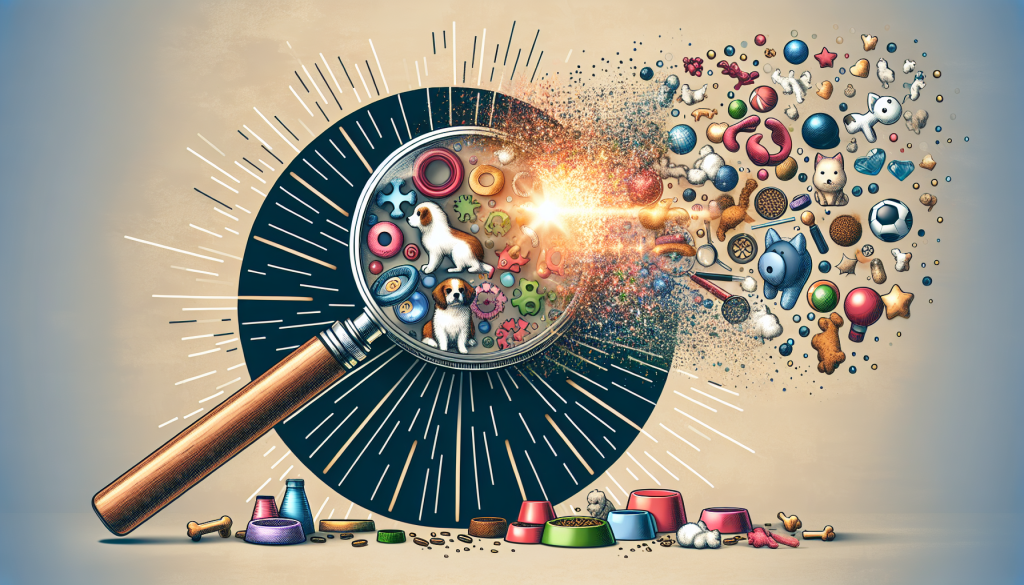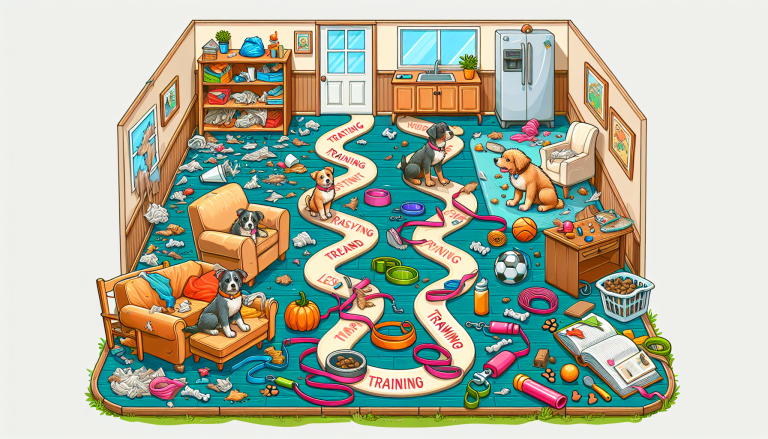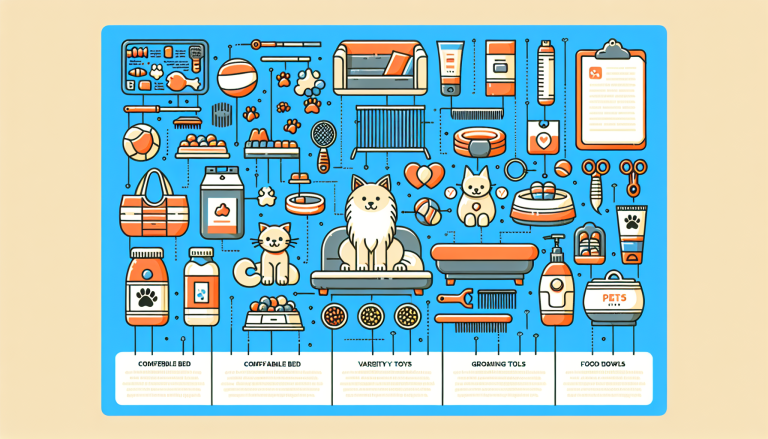Have you ever wondered if those age-old pet myths you’ve heard are actually true? Well, it turns out, many of them are simply not accurate. In this article, we will debunk popular pet myths and provide you with the truth behind these misconceptions. From whether dogs can see in color to if cats always land on their feet, we’ll separate fact from fiction and ensure you have the right information when it comes to your furry friends. So get ready to be enlightened as we uncover the truth about popular pet myths!
Table of Contents
ToggleMyth: Cats always land on their feet
Cats are often known for their agility and ability to land on their feet, but the myth that they always land on their feet is not entirely true. While cats do have a remarkable instinct for landing on their feet, it is important to understand the science behind how they accomplish this feat.
Explanation of the myth
The myth that cats always land on their feet likely stems from their unique ability to manipulate their bodies midair and instinctively land on their feet in most cases. This reputation has been perpetuated through popular media and folklore, leading many people to believe that it is an inherent and infallible trait of all cats.
Scientific explanation of how cats right themselves in midair
In reality, cats have a complex reflex mechanism known as the “righting reflex” that allows them to twist their bodies in midair to land on their feet. This reflex is primarily governed by their flexible backbone and a highly developed inner ear, which helps them maintain balance and orientation. As a cat falls, it will instinctively rotate its head and upper body in one direction, followed by their lower body in the opposite direction. This twisting motion allows them to position their feet downward and prepare for a safe landing.
Instances when cats may not land on their feet
While cats have an impressive ability to land on their feet, there are several situations where they may not be able to execute this maneuver successfully. If a fall is too short or if a cat doesn’t have enough time to rotate its body fully, it may not be able to land on its feet. Additionally, if a cat falls from a great height, it may not have enough time to adjust its body position properly, resulting in injury or even fatality. It is important for cat owners to be aware of these limitations and take appropriate precautions to ensure their pets’ safety.
Myth: Dogs only see in black and white
The myth that dogs can only see in black and white has been widely believed for many years. However, scientific research has debunked this myth and shed light on the differences between dog and human vision.
Origin of the myth
The myth that dogs see in black and white can be traced back to early studies on canine vision that suggested dogs have limited color perception compared to humans. These studies, conducted in the early 20th century, lacked the scientific advancements and technology necessary to provide a complete understanding of canine vision.
How dog vision differs from human vision
Contrary to popular belief, dogs do have the ability to perceive certain colors. While their color vision is not as broad as that of humans, dogs see the world in a range of colors, including shades of blue and yellow. The main difference lies in the number of color receptors in their eyes. Humans have three types of color receptors, while dogs only have two. This means that dogs have trouble differentiating between certain colors, particularly in the red spectrum.
Research supporting dogs’ ability to see certain colors
Recent research has provided evidence to support the idea that dogs can, in fact, see certain colors. Studies have shown that dogs have a higher sensitivity to shades of blue and yellow, while colors in the red spectrum appear more muted to them. This understanding of canine color perception has important implications for activities such as training, where the use of color cues can be optimized to accommodate dogs’ visual abilities.
Myth: Goldfish have a 3-second memory
The myth that goldfish have a 3-second memory has been perpetuated for years, often used to justify keeping goldfish in small and unstimulating environments. However, research on goldfish cognition and memory has debunked this misconception.
The origin of the myth
The origin of this myth is unclear, but it is likely perpetuated due to the short attention span and lack of visible reaction exhibited by goldfish in certain situations. People often assume that if a goldfish swims around its tank without displaying much awareness of its surroundings, it must have a severely limited memory capacity.
Studies on goldfish memory and cognition
Contrary to the 3-second memory myth, research has shown that goldfish possess a much more robust memory system than previously believed. Studies have demonstrated that goldfish can be trained to recognize and respond to various cues, indicating that they have the ability to retain information over extended periods. Additionally, goldfish have been shown to exhibit spatial learning and recognition, further dispelling the notion of a brief memory span.
Explanation of how goldfish exhibit learning and recognition
Goldfish have been shown to have the capacity for associative learning, where they can make connections between specific cues and rewards or punishments. For example, they can be trained to respond to a certain sound or visual cue by swimming to a particular location for food. This ability showcases their memory and cognitive capabilities beyond the limitations of the 3-second myth.
Myth: Rabbits love carrots
The association between rabbits and carrots is deeply ingrained in pop culture, but the belief that rabbits love carrots is not entirely accurate. While rabbits can eat carrots as part of a balanced diet, it is important to understand the ideal diet and potential risks associated with excessive carrot consumption.
Pop cultural influence in associating rabbits with carrots
The association between rabbits and carrots can be traced back to popular media, such as cartoons and children’s literature. Characters like Bugs Bunny have perpetuated the image of a rabbit happily munching on a carrot, leading to the widespread belief that carrots are rabbits’ favorite food.
Ideal diet for rabbits
While it is true that rabbits can eat carrots, their ideal diet consists of a variety of fresh hay, leafy greens, vegetables, and a limited amount of pellets. Hay should make up the majority of their diet as it provides essential fiber. Carrots and other root vegetables should be given in moderation, as they are higher in sugar and can contribute to weight gain and dental issues if overconsumed.
How too many carrots can be harmful to rabbits
Feeding rabbits an excessive amount of carrots can lead to digestive problems and obesity. Carrots are high in sugar and should be treated as occasional treats rather than a staple food. It is important to provide rabbits with a well-balanced diet that meets their nutritional needs to ensure their overall health and well-being.
Myth: Birds will die if they touch a baby bird
The myth that birds will die if they touch a baby bird is a common misunderstanding. This misconception can have harmful consequences for baby birds in need of assistance and it is important to understand the reality of the situation.
Explanation of why this myth exists
The myth likely originated from the idea that human scent can cause parent birds to abandon their young. Many people believed that birds have a strong sense of smell and would reject their babies if they detected human scent on them.
The myth’s negative impact on bird welfare
Believing this myth can be detrimental to the welfare of baby birds. In reality, most bird species have a limited sense of smell, and the presence of human scent is unlikely to cause them to abandon their young. If a baby bird is in need of help, it is crucial to provide proper care and assistance without hesitation.
Proper steps to take when encountering a baby bird
When encountering a baby bird, it is important to assess the situation and determine if the bird is truly in need of assistance. If the bird is unfeathered, injured, or in immediate danger, it may require intervention. It is best to contact local wildlife rehabilitation centers or experts who can provide guidance on how to properly care for and rehabilitate the bird.
Myth: Snakes are slimy
The myth that snakes are slimy likely stems from their shiny and smooth appearance. However, snakes’ texture and physical characteristics differ from the perception of sliminess often associated with them.
Understanding the reasons behind the myth
The misconception may arise from the association between snakes and other animals that are known to be slimy, such as snails or slugs. Additionally, snakes’ scales, which are smooth and shiny, may give off the appearance of being slimy from a distance, contributing to the myth.
Explanation of snake scales and texture
Snakes have dry and scaly skin, which serves various purposes. Their scales provide protection, aid in movement, and contribute to their overall sensory perception. Each scale overlaps with one another, creating a sleek and smooth texture. This texture can sometimes be mistaken for sliminess due to its reflective nature.
How snakes maintain their skin cleanliness
Contrary to the slimy perception, snakes are fastidious creatures when it comes to keeping their skin clean. They regularly shed their old skin in a process called ecdysis. During shedding, snakes rub against rough surfaces to aid in removing the old skin. They may also soak in water or damp areas to facilitate the shedding process. The result is a refreshed and vibrant new layer of skin, devoid of any sliminess.
Myth: Rats spread diseases
Rats have long been associated with the spread of diseases, particularly during historical outbreaks such as the bubonic plague. While wild rats can carry diseases, it is important to differentiate between domesticated rats and their wild counterparts.
History of rat-borne disease outbreaks
Historically, rats have been linked to several disease outbreaks, including the bubonic plague. However, it is crucial to note that these outbreaks were the result of specific species of fleas that infested the rats, rather than the rats themselves. The fleas transmitted the diseases to humans, and the rats acted primarily as carriers.
Differentiating between domesticated rats and wild rats
Domesticated rats, often kept as pets, are distinct from their wild counterparts. They are bred in captivity and have a significantly lower risk of carrying diseases compared to wild rats. Additionally, pet rats are typically kept in clean and controlled environments, reducing the likelihood of disease transmission.
Common misconceptions about rats’ role in spreading diseases
While it is true that wild rats can carry diseases, the belief that all rats are disease carriers is an oversimplification. The risk of disease transmission is primarily associated with wild rats living in unsanitary conditions, such as sewers or areas with poor waste management. Proper hygiene practices and responsible pet ownership significantly reduce the risk of disease transmission from domesticated rats.
Myth: Hamsters enjoy running on a wheel all the time
The image of a hamster running tirelessly on a wheel is often associated with their behavior in captivity. However, this myth overlooks the natural activity patterns of hamsters in the wild and the importance of balancing exercise and rest for these pets.
The origin of hamsters on wheels in captivity
The practice of providing hamsters with exercise wheels can be traced back to the early days of hamster domestication. The wheels were initially introduced as a means of replicating the hamsters’ natural instinct to run in search of food and explore their surroundings.
Understanding hamsters’ activity patterns in the wild
In their natural habitat, hamsters are crepuscular, meaning they are most active during dawn and dusk. They spend their time foraging for food, building elaborate burrows, and engaging in social interactions. Their activity levels naturally fluctuate, and they incorporate periods of rest and sleep to maintain their overall well-being.
Balancing exercise and rest for pet hamsters
While it is important to provide pet hamsters with opportunities for exercise, it is equally crucial to ensure they have adequate time for rest and sleep. Placing an exercise wheel in their enclosure allows them to engage in physical activity when they feel the need. However, it is essential to monitor their activity levels and provide a comfortable and stimulating environment that includes hiding places and toys to encourage natural behaviors and mental stimulation.
Myth: Reptiles don’t require much care
Reptiles are often perceived as low-maintenance pets due to their unique characteristics and environmental needs. However, this myth disregards the essential aspects of reptile care and the commitment and responsibility involved.
Misconceptions about reptiles’ low maintenance
The misconception that reptiles don’t require much care stems from the perception that they are less interactive and have lower activity levels compared to other pets. Additionally, their requirement for specific environmental conditions, such as temperature and humidity regulation, may be overlooked by those unfamiliar with reptile care.
Essential aspects of reptile care
Proper care for reptiles involves providing an appropriate enclosure or terrarium with controlled temperature and humidity levels. Reptiles also have specific dietary needs, depending on their species, and require appropriate lighting, UVB exposure, and regular veterinary check-ups. It is essential to research the specific needs of the reptile species before considering them as pets.
The commitment and responsibility involved in owning a reptile
Owning a reptile requires a significant commitment of time, effort, and resources. It is essential to provide a suitable and stimulating environment, fulfill their dietary requirements, and regularly monitor their health. Reptiles can have long lifespans, and owners must be prepared to provide care for the entire duration of their pet’s life.
Myth: Guinea pigs are low-maintenance pets
Guinea pigs are often considered ideal pets for families or individuals seeking low-maintenance companions. However, this perception overlooks the unique care needs of guinea pigs and the importance of providing a stimulating and comfortable environment for their overall well-being.
Common misconceptions about guinea pigs’ care needs
The notion that guinea pigs are low-maintenance pets stems from their small size and docile nature. Some people may believe that because they are smaller than other pets, they require less care and attention. However, guinea pigs have specific care requirements that need to be met for their optimal health and happiness.
The importance of a proper diet for guinea pigs
A proper diet is crucial for the well-being of guinea pigs. Their diet should consist mainly of hay, supplemented with fresh vegetables and a limited quantity of pellets. Hay provides essential fiber for digestion, while vegetables offer important vitamins and minerals. It is important to avoid feeding guinea pigs foods that are harmful to their health, such as chocolate, onions, or foods high in sugar.
Creating a stimulating and comfortable environment for guinea pigs
Guinea pigs thrive in environments that provide ample space for physical activity and mental stimulation. They require a spacious enclosure or cage with plenty of room to move around, as well as hiding places and toys to keep them entertained. Additionally, regular social interaction with their human caregivers is crucial for their emotional well-being.
In conclusion, it is essential to dispel common pet myths to ensure the proper care and well-being of our animal companions. Understanding the scientific explanations behind these myths allows us to make informed decisions as responsible pet owners. By debunking these misconceptions, we can provide our pets with the care they truly need and deserve.








